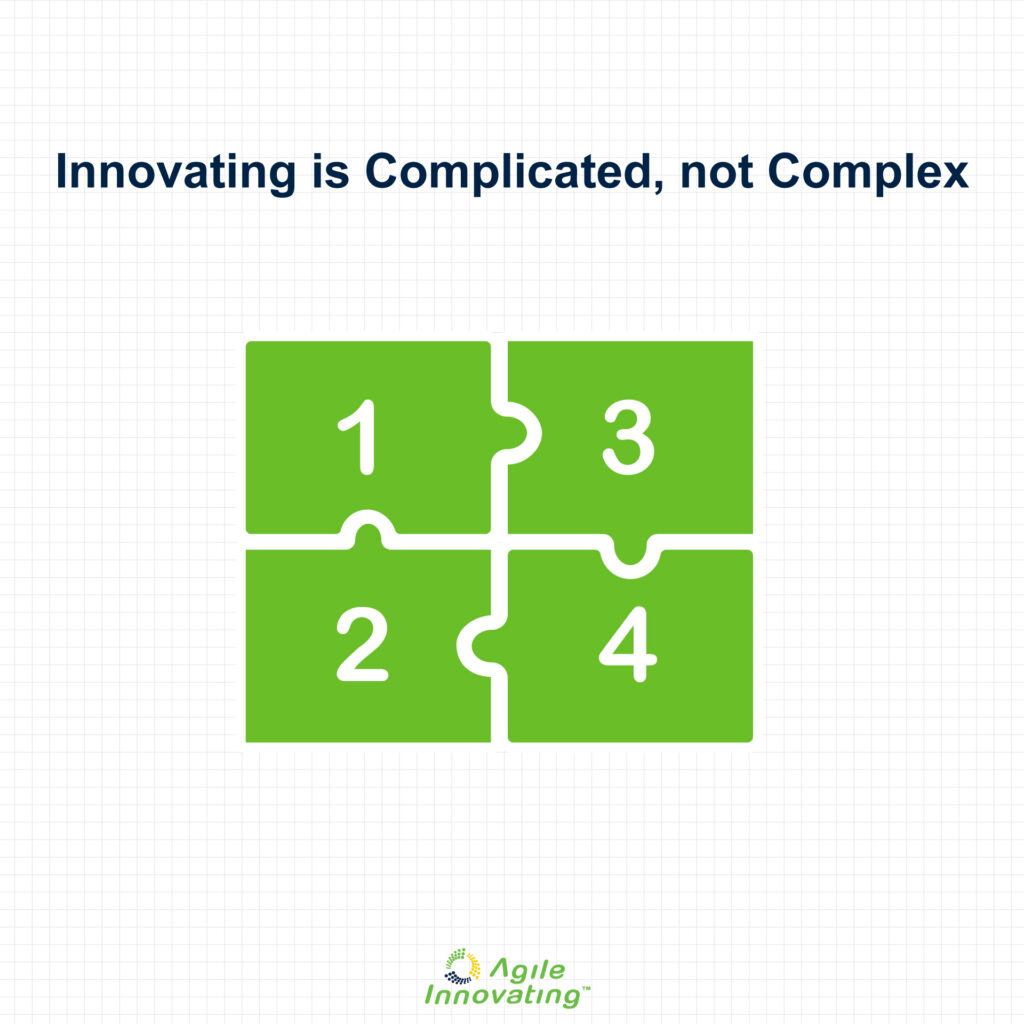
There is no question that innovating can be a frustratingly difficult business activity. Despite this fact, innovating is essential to the health of the business. Businesses are born as a result of innovating. The long term health of a business is dependent upon its ability to innovate. Even though innovating is often de-emphasized in favor of focusing on operational excellence and execution, every business leader knows that, sooner or later, they must innovate.
There is a deeply held belief in the complexity associated with innovating. The belief is that the dependent parts and interdependent factors integral to innovating interact in so many possible ways that outcomes are unpredictable. This causes risk averse decision making that suppresses innovating. Innovating projects can become a discontinuous business activity and something you do only when you have to. Innovating results become inconsistent as a result.
Innovating should be treated as a business discipline like Lean Manufacturing. It can be organized as a practice utilizing repeatable methodologies. Also like Lean Manufacturing, innovating can become a differentiating skill, based upon distinctive processes, if the organization innovates often enough to learn how to be good at it. But again, the belief in its inherent complexity often prevents organizations from exercising innovating enough for it to become a skill.
The reality is that innovating is not complex. It is simply complicated. The conflating of complexity and complicated is a primary factor preventing innovating from becoming an organizational skill.
The difference between complexity and complicated has to do with ambiguity and the confusion between correlation and “cause & effect”. Ambiguity is the lack of certainty in the relationship between factors. Correlation is the apparent relationship between unrelated factors. “Cause & effect” defines the dependent relationship between related factors.
Agile Innovating TM has reduced innovating ambiguity by identifying the direct “cause & effect” relationships that matter. We have also unpacked correlations to find their underlying “cause & effect” factors, further reducing ambiguity and uncertainty.
Agile Innovating TM has organized an innovating practice that provides the clarity that changes innovating, which is believed to have almost unmanageable complexity, into an unambiguous, manageable, repeatable, predictable, simplified process.
